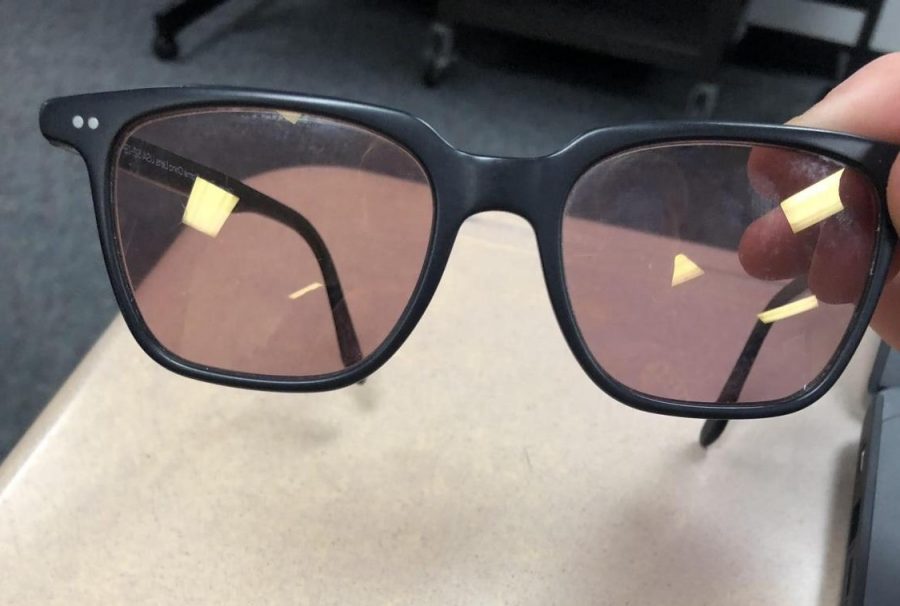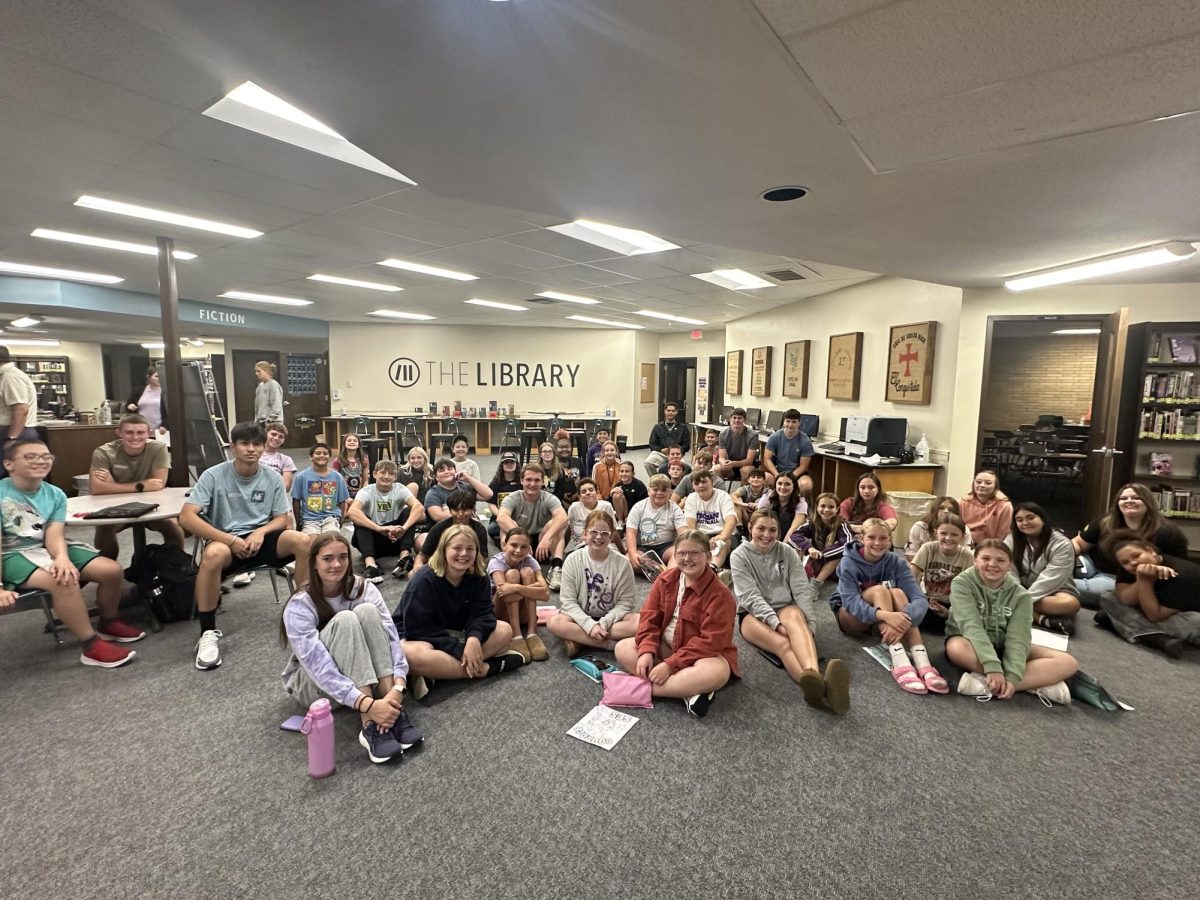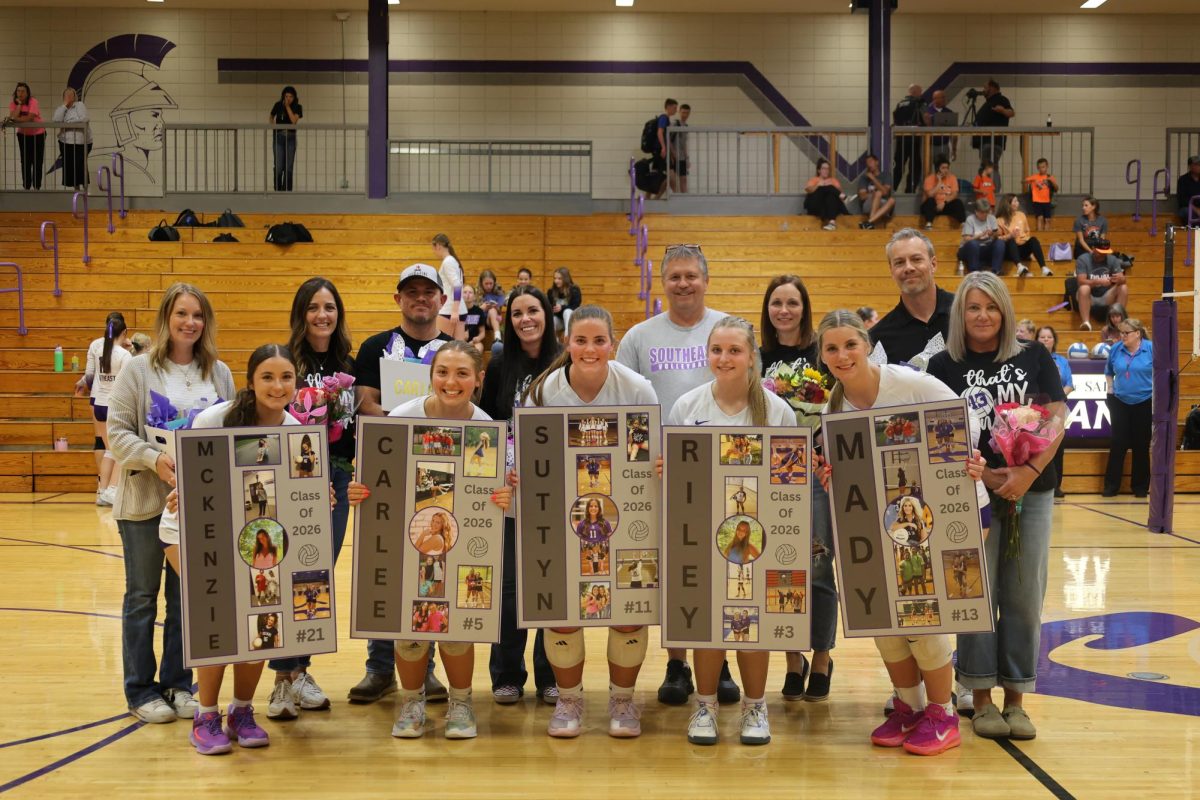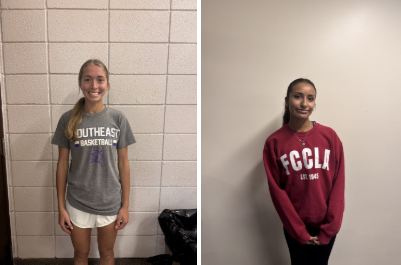Nickelson finds solution to lifelong colorblindness
Nickelson holds his EnChroma glasses.
October 24, 2019
Grass is green. The sky is blue. These are things that most people understand, but sophomore Evan Nickelson does not because he was born colorblind.
“I get (almost) all colors messed up but I see different colors if the shades are different,” Nickelson said.
Nickelson has struggled with colorblindness for his entire life.
“The obstacle that (being colorblind) has given me is getting made fun of,” Nickelson said.
When he was in seventh grade, he got something that helped him see colors correctly for the first time in his life, color-correcting glasses.
“(The glasses) help me see the right colors, and I got to see my first rainbow with them,” he said.
His parents got the glasses for him from EnChroma, a California company that is known for their color correcting glasses. The glasses can cost anywhere between $349 and $420.
“(The glasses work) about eight out of ten times,” he said.
Nickelson said that he does not have any vision issues other than colorblindness, so he doesn’t have to wear glasses for anything else.
“(The glasses) are not prescription glasses, but you can get (EnChroma glasses) if you wear prescription glasses. They can make them magnified for you,” he said.
Nickelson does not wear the glasses all of the time; however, he could if he wanted. EnChroma glasses can be worn all of the time, even when driving.
Scott Schoenfeld is another person at Southeast of Saline who is colorblind.
“The colors red/green, green/pink, purple/blue, brown/green are the (colors I) most often (get) mixed up. It depends on the shade of the colors whether or not they are difficult to determine their exact color,” he said.
Schoenfeld does has not tried color-correcting glasses but he thinks that they could be very useful.
“I think the technology to improve color vision is pretty awesome,” he said.
He said he has had a lot of obstacles throughout his life because of his colorblindness.
“There are stop lights and brake lights that are tough to tell if they are red/green or red/orange; however, in Kansas the locations of the green lights are always the bottom, and (knowing that) the third (tail) light high on the vehicles (is the brake light) has really helped me determine if someone is pressing on the brakes,” he said.
“Duck hunting is another challenge because a hunter is allowed to shoot a maximum of each species per day. For example, a hunter can take five Mallards per day and only two can be hens. Depending on the lighting conditions and the maturity of the birds, the brown head of a hen and the green head of a drake are not always obvious.”
Although there have been some cons in his life because of colorblindness, there is a clear benefit, too.
“Not being able to rely on color, my brain is better at spotting texture and line differences when searching for something,” he said.







